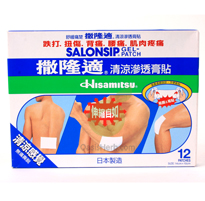 Patients who are at high risk of atrial fibrillation (AF) recurrence after electrical cardioversion are more likely to stay in sinus rhythm if they take an omega-3 polyunsaturated fatty-acid (PUFA) supplement on top of standard antiarrhythmic therapy, according to a randomized, placebo-controlled trial presented at the American College of Cardiology 2010 Scientific Sessions.
Patients who are at high risk of atrial fibrillation (AF) recurrence after electrical cardioversion are more likely to stay in sinus rhythm if they take an omega-3 polyunsaturated fatty-acid (PUFA) supplement on top of standard antiarrhythmic therapy, according to a randomized, placebo-controlled trial presented at the American College of Cardiology 2010 Scientific Sessions.
The study randomized 200 patients who had AF persisted for at least one month despite therapy with amiodarone and either ACE inhibitors or angiotensin receptor blockers (ARBs) to receive either placebo or 1 g/day omega-3 PUFA in addition to the other drugs after electrical cardioversion.
The omega-3 PUFA supplement contained eicosapentaenoic acid (EPA) and docosahexaenoic acid (DHA) ethyl esters in an average ratio of 0.9 to 1.5.
Patients were also monitored on their warfarin levels to achieve an international normalized ratio (INR) between 2 and 3.
At the end of the year, patients who took omega-3 PUFA on top of anitarryhtmic agents required fewer shocks (144 vs. 169, p<0.001) and lower shock energies (1.21 vs. 1.76, p<0.001) for successful cardioversion. Also, more of them were in sinus rhythm after cardioversion (59% vs. 34.3% in 12 months, p<0.0002).
Table 1. Cardioversion requirements by treatment group
| Parameter | Placebo, n=99 | Omega-3 PUFA, n=100 | p |
| Mean energy for cardioversion (J) | 169 | 144 | <0.001 |
| Mean number of shocks required | 1.76 | 1.21 | <0.001 |
Table 2. Time to first AF recurrence (primary end point) and rate of maintained sinus rhythm (secondary end points) in omega-3 PUFA and placebo groups, by intention to treat
| End point | Placebo, n=99 | Omega-3 PUFA, n=100 | p |
| Time first recurrence (d) | |||
| Mean | 139 | 168 | <0.001 |
| Median | 112 | 156 | <0.001 |
| Rate of maintained sinus rhythm (%) | |||
| 1 mo | 88 | 94 | 0.082 |
| 3 mo | 70 | 84 | 0.031 |
| 6 mo | 49.5 | 73.0 | 0.004 |
| 12 mo | 34.3 | 59 | 0.0002 |
In multivariate analyses, patients who took omega-3 PUFA therapy were associated with a 57% reduced risk of AF recurrence after cardioversion. The benefit was independent of age, AF duration, and whether the patient had diabetes.
American College of Cardiology 2010 Scientific Sessions.
Please visit us at healthreason.com





